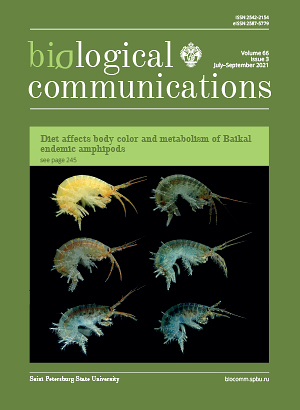Protein glycation and drought response of pea (Pisum sativum L.) root nodule proteome: a proteomics approach
DOI:
https://doi.org/10.21638/spbu03.2021.303Abstract
Because of ongoing climate change, drought is becoming the major factor limiting productivity of all plants, including legumes. As these protein-rich crops form symbiotic associations with rhizobial bacteria — root nodules — they readily lose their productivity under drought conditions. Understanding the underlying molecular mechanisms might give access to new strategies to preserve the productivity of legume crops under dehydration. As was shown recently, development of drought response is accompanied by alterations in the patterns of protein glycation and formation of advanced glycation end products (AGEs) that might be a part of unknown regulatory mechanisms. Therefore, here we address the effects of moderate drought on protein dynamics and AGE patterns in pea (Pisum sativum) root nodules. For this, plants inoculated with rhizobial culture were subjected to osmotic stress for one week, harvested, the total protein fraction was isolated from root nodules by phenol extraction, analyzed by bottom-up LC-MS-based proteomics, and AGE patterns were characterized. Surprisingly, despite the clear drought-related changes in phenotype and stomatal conductivity, only minimal accompanying expressional changes (14 rhizobial and 14 pea proteins, mostly involved in central metabolism and nitrogen fixation) could be observed. However, 71 pea and 97 rhizobial proteins (mostly transcription factors, ABC transporters and effector enzymes) were glycated, with carboxymethylation being the major modification type. Thereby, the numbers of glycated sites in nodule proteins dramatically decreased upon stress application. It might indicate an impact of glycation in regulation of transport, protein degradation, central, lipid and nitrogen metabolism. The data are available at Proteome Xchange (accession: PXD024042).
Keywords:
advanced glycation end products (AGEs), drought stress, glycation, pea (Pisum sativum), polyethylene glycol (PEG), proteomics, root nodules
Downloads
References
Downloads
Additional Files
Published
How to Cite
License
Articles of Biological Communications are open access distributed under the terms of the License Agreement with Saint Petersburg State University, which permits to the authors unrestricted distribution and self-archiving free of charge.





